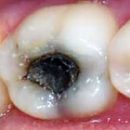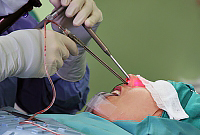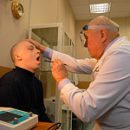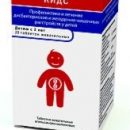You have a nasal polyposis and you have to surpass? Learn more about the operational treatment of nose polyps from this article. For, as you know, warned - it means armed.
Content
Indications and Contraindications to the operation
Typically, the nose polyps are found in men about two - four times more often than in women. This pathology suffer from 1 to 4% of people, while the nose polyps are found mainly in adults.
Nose Polyps are the growth of the inflamed mucous membrane of the nose or the incomplete sinuses. In appearance they resemble bunches of grapes.
Sometimes the cause of nose polyps is allergic or infection. Most often, the nose polyps begin their height near the lattice sinus, at the very top of the nose cavity. Gradually, as the polyp grows, it can close the nasal moves, thereby causing obstruction. In this case, the patient begins to breathe mouth. Nose polyps are often combined with such pathology as bronchial asthma, allergic rhinitis (hay fever), as well as in patients with cystic cycidosis and chronic sinusitis (sinusitis, frontititis and t.D.).
In addition, nose polyps can block the openings of the incomplete sinuses. They contribute to the development of inflammation in them. In some cases, the nose polyps block part of the nasal mucosa responsible for smelling. Unfortunately, when developing such a complication, the surgical removal of polyps can no longer return the smell.
Typically, the operational treatment of the nasal polyps is shown
at:
at:
- purulent-inflammatory processes of the nose and the incomplete sinuses;
- rough
Violations of the respiratory function through the nose.
Operational treatment of polyps is contraindicated
at:
at:
- exacerbation of chronic obstructive bronchitis or bronchial
asthma; - During the season of flowering allergenic plants in operational and
Postoperative period.
Symptoms of nose polyps are as follows:
- constant congestion of nasal breathing;
- Rubber, sneezing (these manifestations can be both seasonal and year-round and not to have connections with living conditions);
- decrease in smell, change in taste;
- discharge from the nose (may be mucous and mucous-purulent);
- Headache, more or less intense.
The diagnosis of nasal polyps is carried out using the usual inspection of the ENT doctor. Usually, a rososcope is used for this - a metal or plastic tool, which, as if expanding the nostril, thereby giving a doctor review.
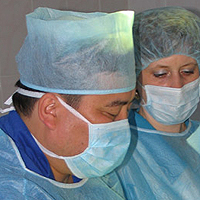 Treatment of nose polyps can be both conservative and operational. With the ineffectiveness of conservative therapy, usually the question of the operational treatment of the nose polyps.
Treatment of nose polyps can be both conservative and operational. With the ineffectiveness of conservative therapy, usually the question of the operational treatment of the nose polyps.
Preparation for the operational removal of nose polyps includes a preliminary examination of the patient. Blood test is carried out, general and biochemical, as well as blood coagulation. If you take any drugs (for example, contraceptive, or anti-inflammatory or some more), you should certainly report this to the doctor.
The doctor will definitely interview you about related chronic diseases, especially concerning the cardiac system. In addition, it is necessary to tell a doctor about the presence of allergies on any drugs or substances, food products or plants. Usually, before surgery for the nasal polyps, an x-ray study is carried out by the incomplete sinus to diagnose the concomitant sinusitis, the curvature of the nose partition.
Typically, the removal of the nasal polyps is carried out under general anesthesia, that is, the patient during the operation is unconscious. The operation is usually in the excision of a polyp using surgical instruments or laser. In this case, the cuts are carried out from the inner surface of the nasal cavity, that is, the scars after the operation remains. During the operation, it is also usual to wash the incomplete sinuses, which contributes to the prevention of reducing the nose polyps. To stop bleeding from the wound after the operation in the nasal moves, gauze tampons are introduced. A few days later they are removed.
This procedure is quite painful, so it is carried out under anesthesia. After the operation, antibiotics are usually prescribed for the prevention of infectious complications. In addition, anesthetic is prescribed.
Usually after surgery, there may be complications such as: bleeding, spikes and fits after operations in nasal strokes, re-formation of nose polyps, infectious complications.

